The Dalmatian is one of the most famous breeds in the world, thanks in large part to the movie 101 Dalmatians. The next few years saw the peak in popularity of spotted dogs. They are very energetic and intelligent. They are well trained but require experienced guidance. Friendly and sociable. At home, in Croatia, and abroad, they were used to catch small hoofed animals, as well as to escort carriages. Today they are primarily companions.
History of the Breed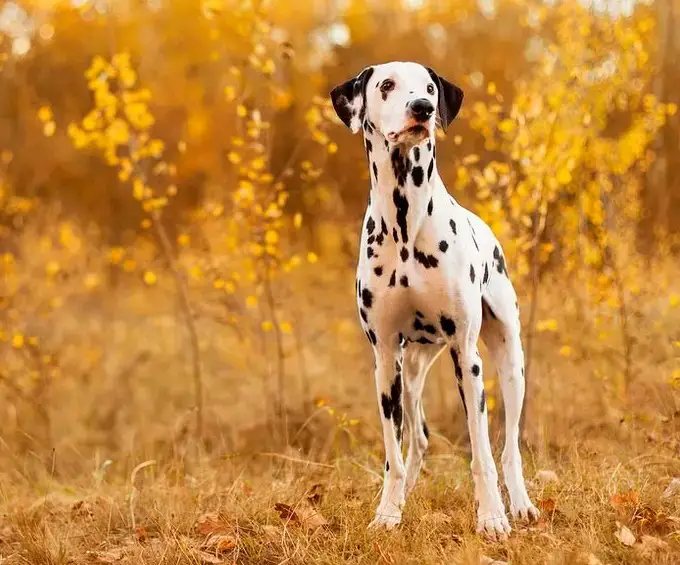
The homeland of the breed: Dalmatia, Republic of Croatia. Dalmatian is a very ancient breed. Its history probably goes back millennia. Some historians attribute Egyptian or Roman origins to the spotted dogs, comparing the appearance of the modern breed with the drawings of dogs on the frescoes found during excavations.
The name of the breed was given by the historical region in the north-west of the Balkan Peninsula – Dalmatia. Located on the territory of modern Croatia and Montenegro.
Church chronicles from the 14th century, and chronicles dating from 1719, definitely point to Mediterranean origins. The earliest depictions of Dalmatians can be found in paintings by 16th-century Italian artists and in frescoes in Zaostog (Dalmatia).
The formation of the Dalmatian, probably, was attended by the Istrian Hound and Mastiff-like dogs of marble color. In the 19th century, the breed became popular in England. The first detailed description of the Dalmatian was written by the Englishman Vero Shaw in 1882, in 1890 it became the official breed standard.
Appearance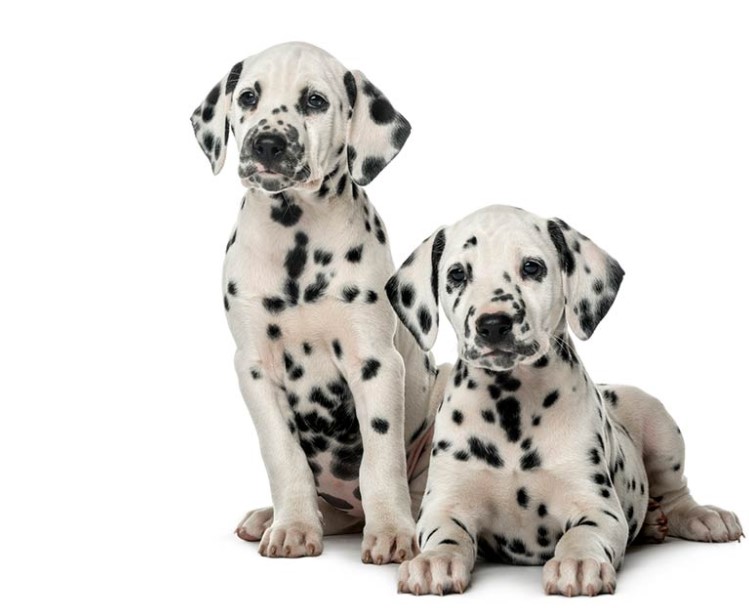
The Dalmatian is an elegant dog of proportionate build. The constitution is dry, strong. The musculature is well developed.
- Height at withers in males ―56-62 cm; weight – 18-32 kg.
- The height at the withers of females is 54-60 cm; weight 15-24 kg.
The head is elongated, the cheekbones are well defined. The upper lines of the forehead and muzzle diverge slightly. The muzzle is well developed. The bridge of the nose is straight. The jaws are strong. The lobe is large, the pigmentation corresponds to the color of the spots. The lips are close to the jaws, complete pigmentation is desirable. Scissor bite. The eyes are oval, brown, set slightly obliquely. The eyelids are pigmented to match the color of the spots. The ears are set wide apart, of medium length, drooping. The neck is rather long, tapering towards the head, without dewlap.
The body is strong, the musculature is relieved. The body length to height ratio is 10: 9. The withers are well defined. The back is straight. The loin is short. The croup is inclined no more than 30 ‘. The chest is deep, spacious, not very wide. The abdomen is moderately tucked up. The limbs are proportional, straight, well-muscled, parallel. Paws “cat”, fingers are compactly collected.
The coat is short, stiff, shiny, tight to the body, thick throughout the body. The color is white with black or white with brown spots. The spots are of approximately the same size, without interspersed white hairs, evenly and symmetrically distributed throughout the body. In the black variety, the diameter of the spots is about 2-3 cm, in the brown – about 2 cm.
Personality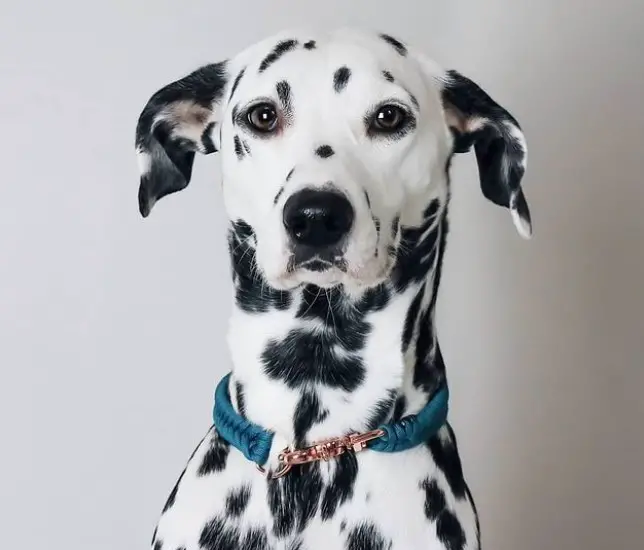
Dalmatians are sanguine by nature. They are very active, sociable and mobile, self-confident, and quickly adapt to their environment. They exude energy and ingenuity if you need to solve a problem or please the owner. Curious and observant. They are interested in everyone and stick their nose everywhere. Playful, friendly, and affectionate. Always cheerful and cheerful. They adore all household members and try to show it in every possible way. Suffering from loneliness and separation. Adult dogs take a long time to get used to a new family. At the same time, they have a sense of their own dignity, can be stubborn, and cunning in achieving goals. At a young age, they need a just mentor. Therefore, they are more suitable for people who have experience communicating with hunting breeds and who are versed in the basics of socialization and education of dogs.
Dogs are friendly to strangers, and friendly to family friends. They will bark at the doorbell but do not have security qualities. The psyche of Dalmatians is stable. They get along well with other animals. They are happy to walk with dogs that do not show aggression. Minor conflicts are possible between males living together.
A Dalmatian is an optimist by nature, but it is worth noting that he can be very vindictive and will not tolerate indifference, and even more so, cruelty. These dogs are silent and very loyal. It’s easy to find a common language with them. They are especially attached to children and are always very kind. However, for families with small children, this dog is not the best choice just because of its playfulness and energy. Joy can knock down even an adult.
Care
You can keep a Dalmatian in an apartment or in a private house, but not as a yard dog, he does not tolerate the cold well and needs constant communication. A Dalmatian cannot be happy in a family where everyone is busy at work for a long time. The Dalmatian is very energetic and active. The owner must provide him with long walks, regular field trips, and plenty of fresh air. If the dog is not exhausted on the street for 2-3 hours, he will exhaust everyone at home. And if he gets bored, things will start to deteriorate. In addition, mental stimulation, various exercises, and learning new commands are important. It is advisable that the dog does not remain alone for a short time. In cold weather, the thin ears of the Dalmatian need to be protected from hypothermia.
Haircare is quite difficult. This is primarily due to the year-round molting of the animal. Their coat is short, sparse, without an undercoat, but it must be combed out daily. Dalmatians are very clean and almost odorless, so you rarely have to bathe them. Periodically, it is necessary to examine the ears and skin between the toes in order to notice problems in time.
Health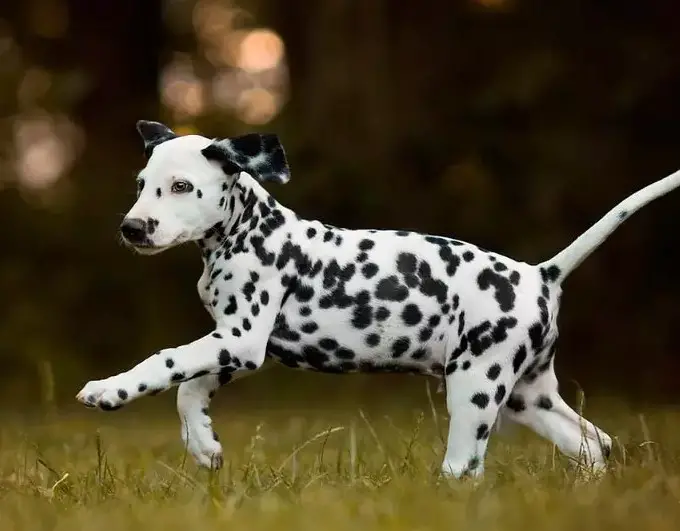
There are very few serious congenital problems in the breed. The most common are:
- Urolithiasis (associated with an increased level of uric acid);
- Congenital deafness;
Approximately 12% of Dalmatians suffer from congenital deafness. Therefore, each puppy is checked individually. This is an important operation because it is difficult to raise a deaf dog. As a rule, a deaf Dalmatian grows up shy and aggressive. Among other things, due to pathology, the pet is constantly at risk of getting into an emergency.
- Dermatological diseases (interdigital or pododermatitis, atopy);
- Ophthalmic diseases (glaucoma, cataracts, PAS);
- Epilepsy;
- Allergy.
Life expectancy is 10-14 years.
Interesting Facts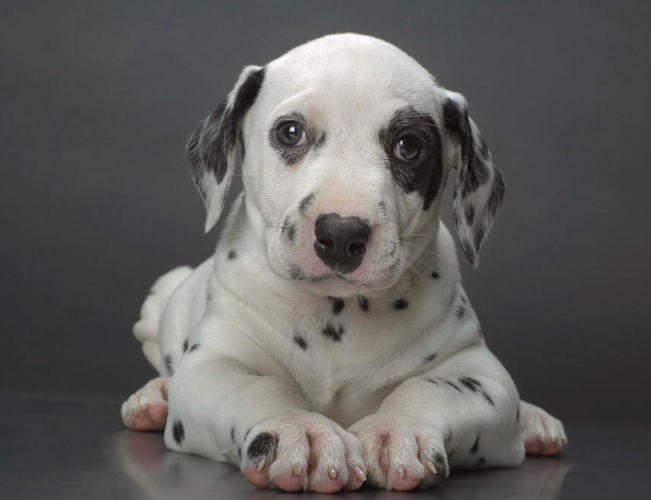
- Dalmatians are born pure white in color, without a single spot. Spots in dogs only appear as they get older.
- Coin-sized round spots are scattered throughout the Dalmatian’s body. Amazingly, there are specks even in the dog’s mouth.
- Dalmatians became real-world stars after the release of the Disney movie “101 Dalmatians”.
